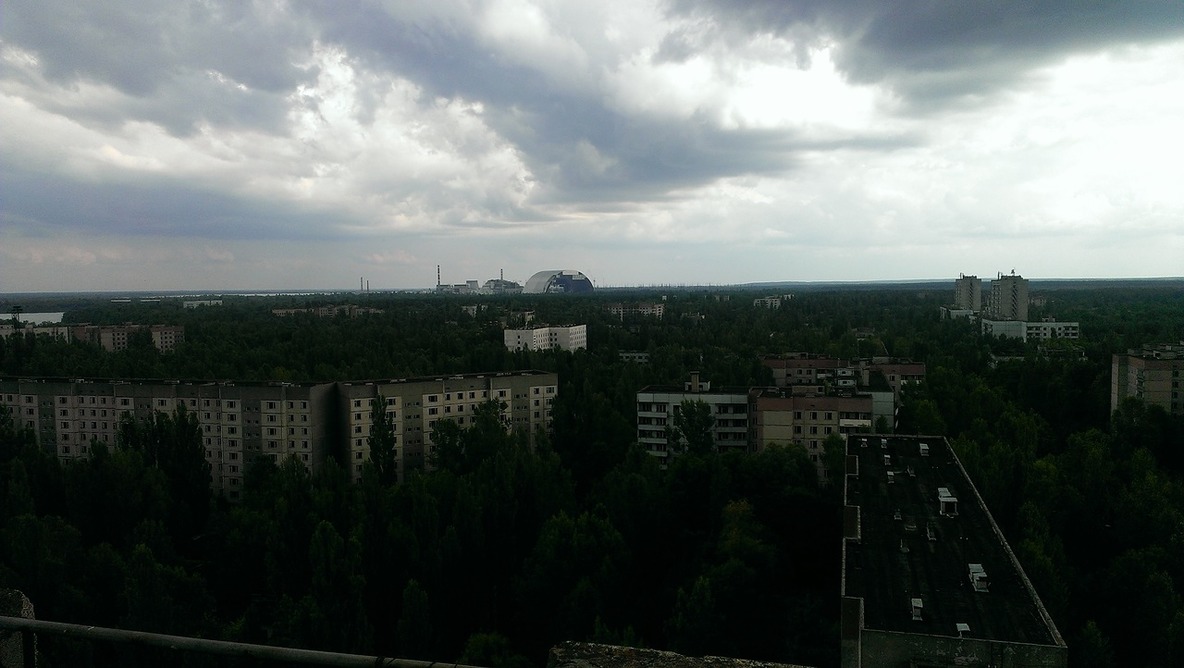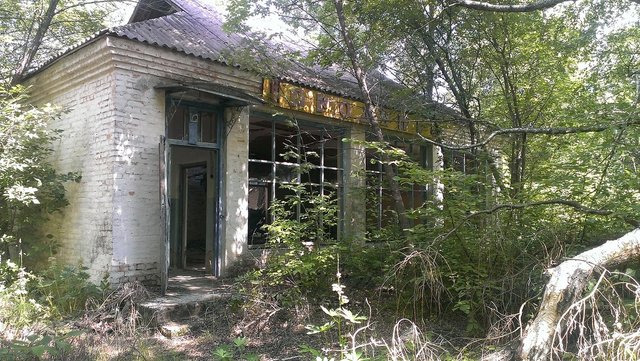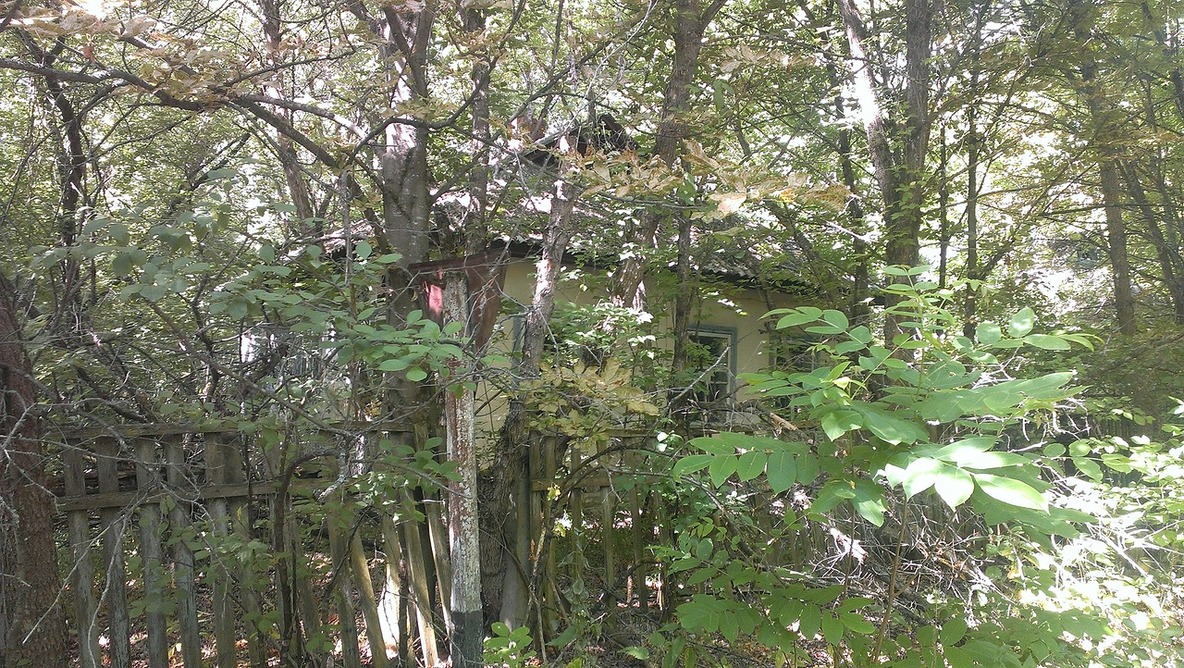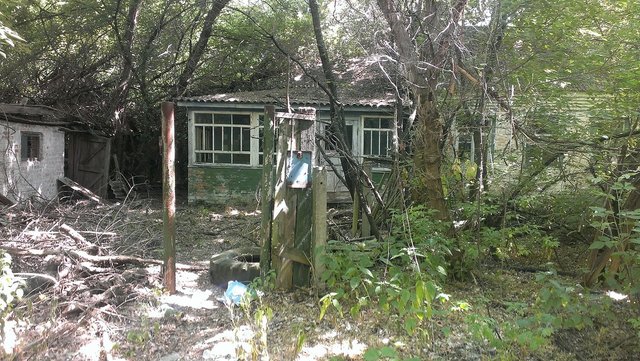My Trip to the Chernobyl Exclusion Area: Part I

The Chernobyl Exclusion Area (often just referred to as "zona" in Russian, "The Zone") fascinates a lot of people, especially fans of the iconic Stalker series of books and video games. Although there is a thriving tourism industry focusing on trips to Chernobyl, the area is still broadly perceived as extremely dangerous, deadly and mysterious.
I would like to think of myself as a daredevil for going on a day long trip into "The Zone", but allow me to educate you about the actual risks and dangers, so you might consider visiting it too. As it is stated on the website of Chernobyl Tour:
"The routes of our trips are far from such unsafe places. In our buses, for a short while only, we cross western and northern radiation releases’ traces. That is why total external dose obtained during usual 10-hour trip in the Zone is several times smaller then the one received during a transatlantic flight."
As you see, it's mostly safe. I will explain the bit about "radiation release traces" once I meet you in Pripyat, where we will arrive in one of the upcoming parts. Now, please follow me.
Entering The Zone
Unfortunately, I have no pictures of this stage, as I was driving into the Exclusion Area still passed out after a night of drinking and singing Ukrainian folk songs on a karaoke machine, but you can indulge in my short written account. Or you can skip down to our first stop with pictures.
The trips usually start at the Kiev Central Bus Station, where you will be met by your tour guide and seated in a classical Russian GAZ minibus, or "Marshrutka" as they are called by most people. The guides are extremely experienced and knowledgeable about the zone, so they will tell you a lot of interesting things during the 2 hour ride from Kiev to the outer edge of the Chernobyl Exclusion Area. Actually, most of them are former so called "Stalkers" – people who roam the zone illegally, either for the sake of adventurism or treasure hunting (smuggling out scrap metal or souvenirs, that is). Enjoy your ride (if the extremely bumpy road permits).
As soon you reach the edge of the zone, you will be asked to leave the bus at a checkpoint with barbed wire and guards, and once you get through the passport control (you must tell your passport number to the tour company before booking, and they pass it on to the guards), you are officially inside the first layer of the 30 km broad Chernobyl Exclusion Area.
An Abandoned Village: Or Not So Abandoned After All?

A former grocery store
Welcome to Zalisya, our first stop inside the zone. Once a prosperous communist kolkhoz (collective farm), its houses now lie abandoned and forgotten behind a curtain of trees that grew here in the years since the catastrophe.
While the houses tell the story of the nuclear fallout that drove their inhabitants away from Zalisya, the walk through this village feels as if you are in an ecological green zone – just what the doc prescribed. The air is extremely fresh, the green is lush and there is even plenty of wildlife to see here. This place hasn't been touched for decades. In fact, parts of "The Zone" are now wildlife enclosures for endangered animals. The radioactivity is less harmful for them than human presence.


This village is completely abandoned you would think, but you would be wrong. There is a small group of mostly old people called "samosyoly" ("those who live on their own"), who still inhabit some of the houses. Most of them were former residents who came back to their villages illegally after the evacuation and continued to live there. Their numbers are dwindling, but there are still about 200 of them living in the zone, and apparently the Ukrainian state has granted them some degree of legality in the last couple of years.
We met one of those in Zalisya. An old lady who kindly offers strawberries grown in her garden to most visitors. Yes – Chernobyl Strawberries, you heard right.

As you can see, our guide, Vladimir, gladly takes them (on his own risk), although it would be forbidden and punishable to carry them out of the zone. The thing about radioactivity in the area is, it's not everywhere. To be precise, most of it has a radiation level similar to Kiev's – completely safe for humans. What makes the zone unliveable for regular people is that high concentrations of radioactivity are spread across it in so called "stains" – pieces of land where chunks of radioactive material have crashed after the reactor explosion. You can't see them, but they are there. If you walk through the zone with a Geiger counter, you will occasionally find them, though.
-------------------TO BE CONTINUED-------------------
In Part II, we will continue our trip and will visit the gigantic abandoned Duga-1 Radar Station, it's control room and military barracks. Make sure to follow me and stay on the bus, you don't want to be left alone in the zone with all the radioactive foxes, do you?
Very interesting. Will be watching for more.
wow! can't wait for part 2. followed and upvoted!
Thanks man, you are welcome! My first real blog post and I found that it can be quite enjoyable to write stuff like this. I will do my best to put a part out every day, we should get about 4-5 parts for Chernobyl. I will than maybe post some other tavel stuff, if I get good feedback for this. :)
I will surely be following your adventure. Keep posting!
by the way, did you see any mutant animals there? :D
No mutants, but now that you mention it, I should include a part about wildlife in one of the later parts, as it is quite interesting. I probably will do it at the very end, once we get to the giant fish near the reactor (spoiler, haha). We kinda met a fox there too, but I don't want to spoil too much.
omg this is getting exciting.
Great read, I enjoyed it.
Thanks, make sure to upvote and resteem. :)
This is a fantastic article, look forward to reading more. One day I hope to visit the area as well, and to visit my friends in Санкт-Петербу́рг.
Glad that you liked it. Going there is absolutely awesome if you are into that kind of stuff. I'll post part 2 tomorrow, it will be even better than part 1!
Great post will be sure to look for part 2
Great to gain new readers. :) Part two will come out tomorrow.
Awesome read, I wish to visit someday.
Make sure to follow me to be notified about part 2. :)
Very interesting indeed, awesome pics! Follow'd and looking forward to Part 2!
I've always wanted to see visit Chernobyl! Your article makes it feel like I'm there seeing it through your eyes. Well done and I can't wait for Part II!
That is so cool! Did you see weird mushrooms or big mushroom "gatherings"? I've read this article from years ago where they studied the mushrooms in Chernobyl and found out that they actually feed in some way from the radiation instead of getting killed.